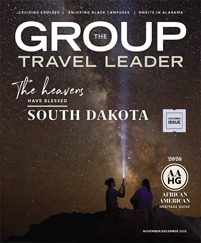
Courtesy Arabia Steamboat Museum
Arabia Steamboat Museum
Kansas City, Mo.
When the westward bound, side-wheeled steamer Arabia hit a snag and sank in the muddy Missouri River, no one could have imagined the events that would unfold. The vessel was discovered 132 years later buried beneath a mountain of mud, and its excavation resulted in today’s Arabia Steamboat Museum.
The boat, an intact time capsule of the mid-1850s, held a mind-boggling array of items: 4,000 leather shoes, boxes of clothing, thousands of dishes, barrels of butter, and pickles and pie filling, still edible in their jars. The boat also held two pre-fabricated homes and, for the seamstress, a surplus of needles, thread and buttons.
Tools were found — trowels, screwdrivers and augers — making up a virtual floating hardware store.
“You take approximately 10 semi trucks and bury them for 132 years, and that’s what we have here,” said David Hawley, owner of the museum, who discovered the boat. “Separated from oxygen and buried under 45 feet of mud, everything has been well preserved.”
Visitors watch a movie recounting the story of the sinking and recovery. The preservation laboratory sits on-site, and cleaning occurs continually. According to Hawley, the museum has 10 years of cleaning to go, and it continues to display new artifacts.
“At 200 tons, it’s the largest collection of wet organic materials found anywhere. It’s one of the largest specific collections of any era in the country,” said Hawley.
Kansas History Museum
Topeka, Kan.
Groups can explore Kansas history from the Native American Indians, who lived on the plains, through the 1980s at the Kansas History Museum.
Within the museum’s permanent gallery, artifacts focus on the Oregon and Santa Fe trails. There’s also a full-size reproduction of a Cheyenne tepee and a fully stocked covered wagon ready for a trip on the Oregon Trail.
Kansas became a territory in 1854 and a state in 1861; pioneers came to the state after the Civil War. In this state, the Civil War dovetailed with the Westward movement.
“It wasn’t until after the Civil War that Kansas pioneer history begins,” said Blair Tarr, museum curator. “Many Civil War veterans came out to settle the land, and it became known as the Great Soldier State.”
Civil War exhibits cover Bleeding Kansas, Quantrill’s raid on Lawrence and raids made on Missouri by Kansans.
The museum exhibits a number of original Civil War artifacts. A standout is the battle flag from Kansas’ first colored infantry, the first black regiment raised in the Northern states. Their initial battle on Oct. 29, 1862, along the Missouri border near Butler was the first time any black soldier ever saw battle during the Civil War.
Pioneer Woman Museum and Statue
Ponca City, Okla.
Women who have made outstanding “pioneering” contributions in space, photography and medicine, as well as settling a new land, are honored at the Pioneer Woman Museum.
Permanent galleries highlight 14 Oklahoma women with vignettes of their lives and quotes. Exhibits include household furniture, equipment, costumes and memorabilia of pioneer family life. Old photographs, newspaper articles and fliers trace their history and heritage.
Oklahoma Women of Rock and Roll features the lives and memorabilia from the state’s rock ‘n’ roll stars through five eras, from the 1950s to today. Visitors can access a touch-screen and listen to more than 60 singers, starting with Wanda Jackson, queen of Rockabilly, who opened for Elvis Presley and dated him for a short time.
Stars include Laura Collins, from the 1940s; Patti Page, who pioneered a recording technique in which she sang her own vocal background and dubbed it into her original recording; and Anita Bryant, whose biggest hit, “Paper Roses,” reached No. 5 on the pop charts.
The museum’s well-recognized cast-bronze “Pioneer Woman” statue was created to commemorate women who braved the dangers and endured the hardships of the pioneer and homesteading life.
“Groups shouldn’t miss the statue out front,” said museum director Jean Winchester. “It was commissioned after 12 to 14 sculptors submitted their ideas, and the designs were put to a public vote.”









